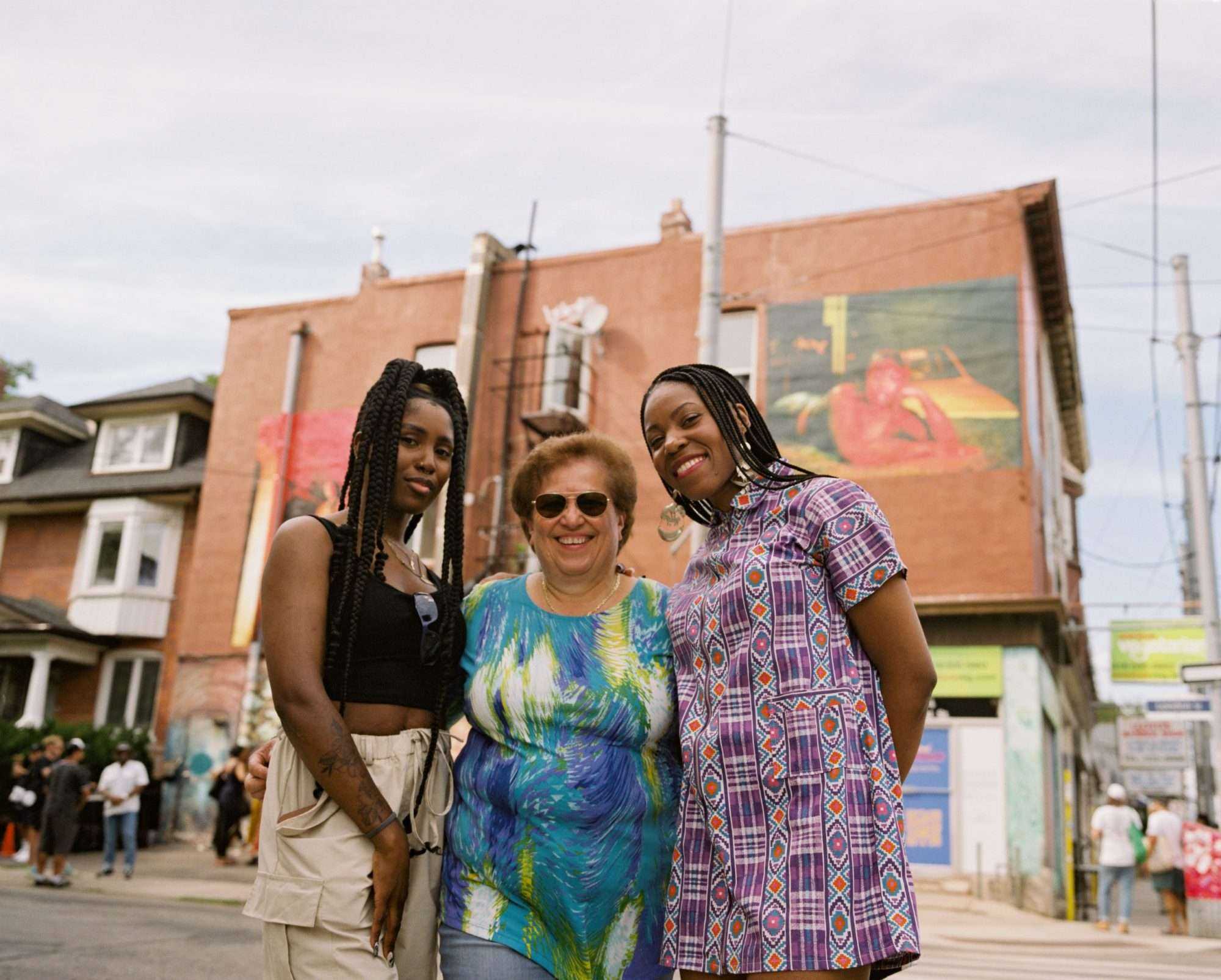on
BY SELINA MCCALLUM
The small island of Jamaica has made a huge impact all over the world. From the spices of the Caribbean to the electrifying dancehall music, Jamaican culture has been influential worldwide. A new two-part photo and documentary exhibition called Rewind/Forward shows us how much Jamaica has had an influence in Toronto. Curated by Alanna Stuart, the exhibit features stories and portraits of five well-known local selectors (DJs) and sound system owners by Jamaican-Canadian photographer Jorian Charlton.
Stuart is a music artist, researcher, curator, and documentarian based in Toronto, Canada and Kingston, Jamaica. As one-half of the Polaris Prize-nominated duo Bonjay, Alanna creates and performs a bass heavy, soul-driven sound that the New York Times calls ‘Canadian Dancehall’. She is also a proud member of the Queer Songbook Orchestra.
“I identify as a music artist because I make music, but I’m interested in what music can tell us about the way we live and so that comes through these documentaries, public art exhibitions, and research,” said Stuart.
Rewind/Forward was conceptualized for ArtworxTO: Toronto’s Year of Public Art. Stuart tells us about the meaning behind the name of the exhibit.
“It is part retrospection and part forecast. So, we’re looking at, what is the Jamaican history that Toronto’s based music culture comes from, and also, who are the artists and selectors and sound system owners carrying those traditions forward? Who is stretching those traditions into other communities that may or may not be immediately seen as representing sound system culture? And the title is from a Canadian film about a white journalist that went to Jamaica and his car broke down.” Said Stuart.
One of Stuart’s fears about putting on the project was getting it wrong.
“I really wanted to wanted to do it the right way, which meant doing extensive research, developing expert knowledge, finding out exactly who the local heroes were. And I think in the end, that that would have been a more ego driven project, because it would have been about, yes, highlighting sound system culture, but in a way where I couldn’t get called out for doing it wrong. When the truth of the matter is, I’m a studio producer, I’m not a selector. I’m half Grenadian. I’m not a full Jamaican. I was born in Ottawa, in a very white Francophone suburb and not Toronto. But I grew up to a Jamaican father who loved taking me shopping for stereo equipment,” said the Curator of Rewind/Forward.
The selectors featured in the exhibit are Ace Dillinger, Bambii, Heather “Live Wire” Bubb-Clarke, Nino Brown, and Tasha Rozez. Together, these five selectors (DJs) and soundsystem owners offer a fuller view of Toronto’s bass music culture across eras, genres, and communities.
Viewers will be able to weave into the past and future when they watch the beautiful stories from the five selectors at www.rewind-forward.ca
Tasha Rozez talks about how she felt when Stuart reached out to her.
“Oh God, I actually did cry. I was very humbled. I’ve recently become a funeral director. So, I’m very busy with that side of my career. And just at the time of being so busy doing that, to get a call to do something other than playing music, to be recognized, for your work, and your contribution to the culture in your city was very humbling to me.” said Rozez.
Hailed as one of the female sound clash champions, Gunz’N’Rozez has been active for over 20 years thanks to her vied for trove of dubplates from reggae and dancehall artists like TK and Vybz Kartel. She has played all over the world and recalls some of her best memories in countries within Europe.
“I remember a white man with dreads came up to me. He was like, “Oh, I just want you to know we really love Jamaica.” He was trying to say, “Don’t think everybody is like what you’ve heard. There are people that are here that are really into oneness, into love and don’t see color, and we just love music, you know?” That’s what I could tell from his broken English,” said Rozez.
Rewind/Forward’s free on-site exhibition opened on Saturday, September 10th. Printed large and loud and mounted way up on high the monumental portraits a part of the public art show are located outside 854 Bathurst Street, formerly the home of One Love Vegetarian. It is an accessible site in the city’s historically Jamaican Annex neighborhood.
The website is an extended play on the in-person exhibit, featuring video shorts and audio documentaries spanning pre-Independence Jamaica to Toronto rave futures. Over time, Rewind/Forward will slowly release a series of custom music mixes, full-length audio stories, and more.
The in-person exhibition runs until November 15th. Stuart hopes the exhibition will just be the beginning of bringing the history of sound system culture to light.
“This exhibition is really meant to be the start of an ongoing conversation. There will be full length audio documentaries and custom music mixes that will be coming out over the next six months or so. But ultimately, what I’m trying to do is get the sound system culture conference, that usually happens in the UK, to come to Canada, to come to Toronto, to bring out everybody that contributes to this culture to have a conversation with each other. This exhibition is meant to draw out opinions and feelings, and for us to bring them together to have a conversation about how we want to move forward,” said Stuart.
Stay in the loop with exclusive news, stories, and insights—delivered straight to your inbox. No fluff, just real content that matters. Sign up today!













